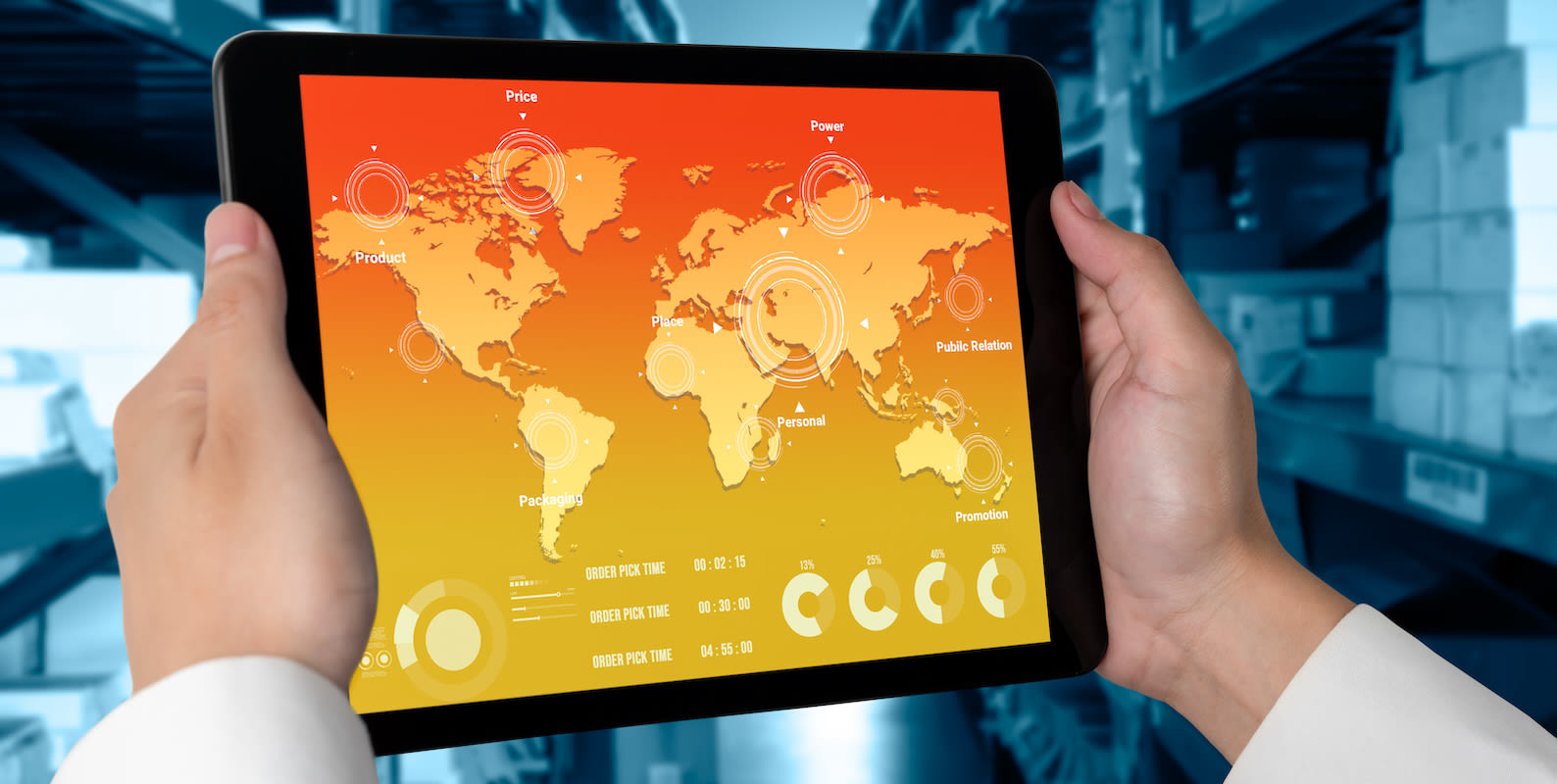
July 21, 2023
State of Trade: Is Shipping Bottoming Out or Still Descending?
State of Trade: Is Shipping Bottoming Out or Still Descending?

There was agreement among the panelists for our latest State of Trade webinar that shipping – or logistics, more broadly – could be bottoming out, “barring some type of shock.” That doesn’t mean all is “back to before times,” however, and it begs an important question: What, if anything, will raise it from the bottom?
Asked to describe their experience in shipping goods over the past six months, half of respondents who joined the webinar answered that they have been “better than 2021 but not back to ‘before times.’”
That is an encouraging sign considering it has been a wild few years. Looking at the US, after a sharp drop in real consumer spending in the Spring of 2020, just as the pandemic was beginning to hit, there was an even sharper recovery. This resulted in a massive surge in demand for imports, which created severe bottlenecks across the shipping industry. Flexport’s Ocean Timeliness Indicator, a measure of the number of days it takes to ship from Asia to North America and Asia to Europe, began shooting upwards around this time, eventually more than doubling for both trade lanes by early Summer 2022.
What’s in stor(age)?
Another one of the wilder swings has been in inventories. Inventories have been more closely watched by the shipping and logistics industry over the past 12 months than perhaps any time since the global financial crisis. In general, low inventory levels are suggestive of future demand for imports as firms re-stock, with higher levels suggesting subdued import demand.
At issue going into and coming out of the pandemic is that it’s difficult now to determine the appropriate levels of inventory. “We go into the pandemic, consumers receive stimulus money and can’t spend it on services,” says Dr. Jason Miller, professor of supply chain management at Michigan State University. “Inventory-to-sales ratios plummet and stay really low – much below the pre-Covid levels – until the back half of 2021. And then they start to increase dramatically.”
This “over-ordering” led to record imports but also to excess inventories into 2022 and, in some cases, up to the present. Three times so far this year we have asked our audiences to evaluate their current inventory levels. In March, 33% replied they have what they need, i.e. not too much or too little. In May and again this week, that response came from 48% and 47%, respectively.
The ocean view
Among the causes for the over-ordering during the pandemic were not only potential errors in forecasting demand on the part of firms, but also legitimate concerns about the ability to secure goods.. Those have now been largely alleviated, says Sanne Manders, Flexport’s president of Ocean and Air, allowing some firms that pursued a “just-in-case” buying strategy to return to “just-in-time,” which means holding tighter inventories.
This is having an effect on imports and thus ocean freight. Carriers, which increased capacity during the pandemic, are now trying to better balance supply and demand, or “right-size.” Carriers are doing a lot to control capacity,” he says, “so there is slow-steaming, blank sailings (canceled stops) and even whole services being canceled.” That still isn’t fully correcting the imbalance – prices are back to 2019 levels but remain volatile, a situation Manders expects to continue for the next six months.
Up in the air
It’s a similar story for air freight. During the pandemic, when US ports were congested, more high-value, time-sensitive shipments were shifted from ocean to air. There is less of a need for that now, however, and volumes are down. “It’s been rough (from Asia to the US),” according to Dr. Miller. “Imports were down 20.4% year-over-year in May, the weakest May going back to 2017.” Europe hasn’t been much different – air volumes were down 15% in May, although that volume is roughly in line with pre-pandemic years.
At the same time, operating costs have risen.. Fuel prices have played a part, but they are not the only factor. “It’s the pilot costs,” says Manders, and anything else “related to inflation.” For these reasons, and because some carriers are operating more expensive, older aircraft, he doesn’t expect prices to fully regress back to 2019 levels. Demand for shipping new consumer electronics in the fall could also be supportive of prices in the back half of the year.
And if by land
The outlook for trucking and rail is bleak in the near-term. “We’re in a freight recession (in the US),” says Miller, “and have been since the third quarter of 2022.” And those waiting for a recovery are going to wait awhile, he says, arguing that it won’t be until the second quarter of next year that conditions start improving. Even then, much will depend on inflation and when the Fed starts easing monetary policy – without an upturn in single-family housing starts, which are sensitive to interest rates, there won’t be enough to spur business investment within the US.
In the trough
Hitting a bottom – whether now, in the fall, or early next year – doesn’t mean a bounce will follow. Manders thinks it’s going to be a “long, flat bottom” for shipping unless more planes are parked and vessels scrapped. Miller is watching light truck sales in the US, which in the second quarter of this year came in above Q2 2019 levels. If we start seeing substantial declines, he says, that may be a sign there is still further to go, at least insofar as domestic trucking and rail are concerned.
For more, watch The State of Trade: Is Shipping Bottoming Out or Still Descending?
Disclaimer: The contents of this report are made available for informational purposes only and should not be relied upon for any legal, business, or financial decisions. Flexport does not guarantee, represent, or warrant any of the contents of this report because they are based on our current beliefs, expectations, and assumptions, about which there can be no assurance due to various anticipated and unanticipated events that may occur. This report has been prepared to the best of our knowledge and research; however, the information presented herein may not reflect the most current regulatory or industry developments. Neither Flexport nor its advisors or affiliates shall be liable for any losses that arise in any way due to the reliance on the contents contained in this report.
About the Author





